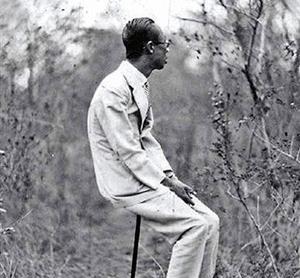Ai Xinjueluo Puyi, the last emperor of the Qing Dynasty, is also the last emperor of the entire Chinese feudal society, he went from emperor to traitor, to prisoner, to CPPCC member, his identity has changed countless times, so that his life of only sixty-one years has become colorful, people's curiosity about him often lies in his extraordinary experience and wonderful life.

As the last emperor in Chinese history, Puyi sat on the prosperity of the Forbidden City. It can be said that every grass and tree in the Forbidden City belongs to his family. However, after the fall of the Qing Dynasty, the whole country fell into chaos, the Forbidden City changed hands several times, and gradually countless rare treasures in the Forbidden City became cultural relics and monuments for people to visit, even if it was Puyi himself, he could not avoid buying tickets.
There are many views on the ability to appreciate cultural relics, which can generally be summarized into two kinds, one is called empirical appraisal and the other is called professional appraisal.
These two are often necessary abilities for the identification of cultural relics, and they complement each other, not to mention that there are many controversies in the cultural relics themselves, just like historical documents, with thousands of faces. Therefore, these two abilities are indispensable.
And Puyi is the kind of person who walks with a lame leg.
Puyi's ability to identify cultural relics, through and through feeling, relying on experience, such an ability is not strictly speaking, it is not a kind of ability, at best it is a habit, which is similar to the concept of practice making skill.
Puyi's ability to identify cultural relics also stems from this. For a long time, Puyi has not learned professional cultural relics appraisal knowledge, but has only seen more cultural relics in the Forbidden City, so it has formed a subjective consciousness, and this consciousness only exists in the cultural relics that he is familiar with, that is, limited and unstable.
In the folk, there is also a story circulating, a year after liberation, Puyi returned to his hometown, very law-abiding to buy tickets into the Forbidden City, the old place revisited he is really a mixed feeling, at that time he was more than half a hundred years old, thinking of the vicissitudes of this half of the world, how not to have infinite feelings.
Before Puyi finished sighing, he found an exhibit that made him feel less happy, so he said very directly, "That, the portrait of the Guangxu Emperor, yes, that one, hung wrong." ”
The face of the curator of the Palace Museum, the same face as that of Wang Guowei, changed from a rosy and shiny face to a reddish pig liver color. "I, an expert, how can I be wrong?"
Puyi also unceremoniously shrugged back, "Will I not know my father?" A critical blow made the curator's blood tank empty in an instant. Choked up and speechless.
So, from this story that does not know the authenticity, we return to this question, what is Puyi's cultural relics identification ability? I came to the conclusion that Puyi's ability to identify cultural relics is accurate but not systematic, and the limitations are very large but not comprehensive.
As we all know, cultural relics appraisal is a very arduous, very complex work, the need for sufficient knowledge and extremely rich experience, even like the collector Ma Weidu, do not dare to guarantee how high their level of cultural relics appraisal, but also dare not guarantee that they will never hit the eye, not to mention how to judge the authenticity of cultural relics?
We know that those who have enough years can be called cultural relics, but the level of research value is a matter of level, and the identification of cultural relics is to identify what is genuine and which things are fakes.
In fact, this is easy to say, but it is difficult to do, and even in many cases, fakes are also genuine. To use a simple analogy, Wang Xizhi's Lanting Preface calligraphy works have been lost, but if there are some great calligraphers in the Tang and Song Dynasties who copied the Lanting Preface and passed it down to the present, are they not cultural relics? Isn't it worth researching? But they are still not genuine, but fakes, but this does not shake its status as a cultural relic.
Therefore, the identification of cultural relics is a strong professionalism, affected by experience, and the standard is seriously inconsistent, it is likely that a cultural relics in the eyes of different experts, will have different conclusions, and Puyi only relies on his own feelings, seen or not seen, and judging the authenticity of cultural relics, itself is very ridiculous, not to mention that he has the level of cultural relics identification.